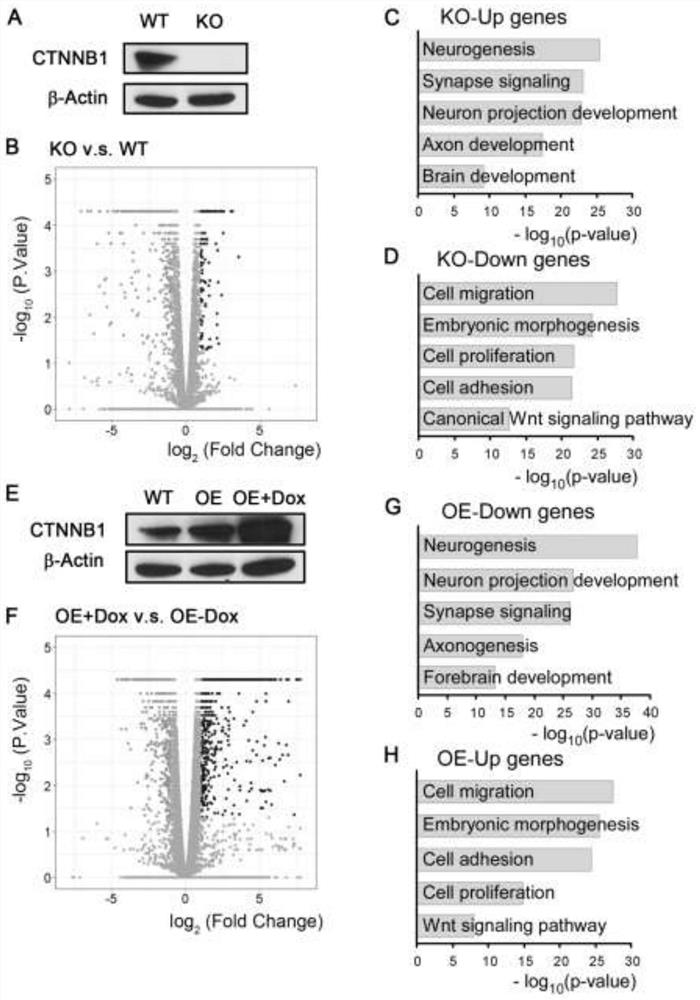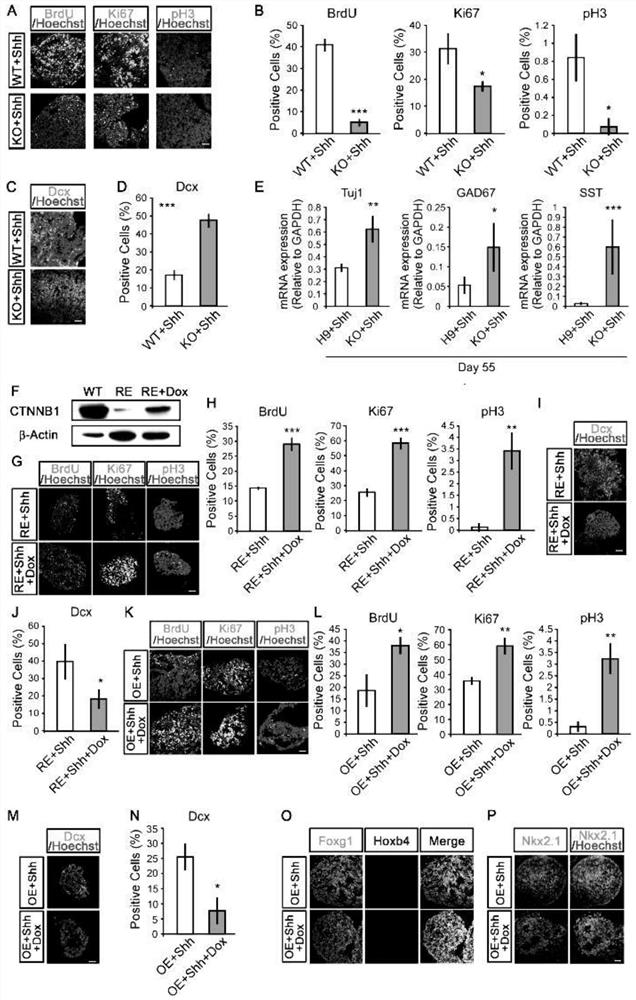Method for amplifying human neural precursor cells through regulation of Wnt signals and/or Notch signals
A technology of precursor cells and human nerves, applied in the biological field, can solve the problems of limited effect on disease progression, high disability rate, and expensive monitoring costs
- Summary
- Abstract
- Description
- Claims
- Application Information
AI Technical Summary
Problems solved by technology
Method used
Image
Examples
Embodiment 1
[0048] 1. Recovery and culture of human embryonic stem cells:
[0049] (1) Preheat DMEM / F12 medium and human embryonic stem cell (hES) medium in a water bath at 37°C.
[0050] (2) Take the 6-well plate covered with MEF, suck away the MEF medium, add 2ml DMEM / F12 medium to each well, shake gently and suck off the DMEM / F12 medium, add hES medium to each well 2ml and put back into the 37°C incubator.
[0051] (3) Take out the frozen hES cells from the liquid nitrogen tank, and shake them gently in a water bath at 37°C to quickly thaw them.
[0052] (4) Add the thawed hES cells into a 15ml centrifuge tube containing 6ml hES medium, mix gently, and centrifuge at 1100rpm for 1min.
[0053] (5) Aspirate the supernatant, take out the MEF plate added with hES medium, resuspend the cells with 0.5ml hES medium, add the cells into the 6-well plate, mix well, and culture in a 37°C incubator.
[0054] (6) After 12-15 hours, suck off the culture medium, then add 2.5ml of fresh hES medium ...
Embodiment 2
[0265] Human embryonic stem cells can be directed to differentiate into human forebrain cortex precursor cells and MGE precursor cells. For the specific schematic diagram, see figure 1 a. The resource of human ES cells comes from the international commonly used human embryonic stem cell line H9. Human ES cells were cultured on mouse embryonic fibroblasts (MEF) treated with radiation (the formula of the culture medium: 392.5ml DMEM / F12, 100ml Knockout serum replacer, 5ml MEM nonessential aminoacids solution, 2.5ml 200mM L- glutamine solution, 3.5ml 14.3M β-Mercaptoethanol). The cell clones were passaged every 5 days through a combination of mechanical and chemical methods. The method of neural differentiation of human embryonic stem cells refers to the third part of Example 1. The culture medium contains bFGF factor. When it differentiates towards neuroectodermal cells, ES cells are gathered into embryoid bodies (Embroynic Body, EBs) were suspended cultured in a medium witho...
Embodiment 3
[0269] In order to clarify the role of Wnt signaling, we knocked out β-catenin, an important effector in the Wnt signaling pathway, in human embryonic stem cells (KO cells, this cell line has been published; Liu, Z., Hui, Y., Shi, L ., Chen, Z., Xu, X., Chi, L., Fan, B., Fang, Y., Liu, Y., Ma, L., et al. (2016). Efficient CRISPR / Cas9-Mediated Versatile , Predictable, and Donor-Free Gene Knockout in Human Pluripotent StemCells.Stem Cell Reports 7,496-507.), and Western blot experiments verified the absence of β-catenin protein ( figure 2 A), for the experimental method, refer to Part 7 of Example 1 for details. We performed transcriptome sequencing (RNA-seq) on the MGE precursor cells differentiated from normal (WT, i.e. human embryonic stem cell line H9 in Example 2) and gene knockout (KO) embryonic stem cells. The specific method See Parts 8 to 11 of Example 1. We found that compared with WT cells, KO-MGE precursor cells had a total of 960 differential genes, including 400...
PUM
| Property | Measurement | Unit |
|---|---|---|
| Outer diameter | aaaaa | aaaaa |
| Inner diameter | aaaaa | aaaaa |
| Resistance | aaaaa | aaaaa |
Abstract
Description
Claims
Application Information
 Login to View More
Login to View More - R&D
- Intellectual Property
- Life Sciences
- Materials
- Tech Scout
- Unparalleled Data Quality
- Higher Quality Content
- 60% Fewer Hallucinations
Browse by: Latest US Patents, China's latest patents, Technical Efficacy Thesaurus, Application Domain, Technology Topic, Popular Technical Reports.
© 2025 PatSnap. All rights reserved.Legal|Privacy policy|Modern Slavery Act Transparency Statement|Sitemap|About US| Contact US: help@patsnap.com



